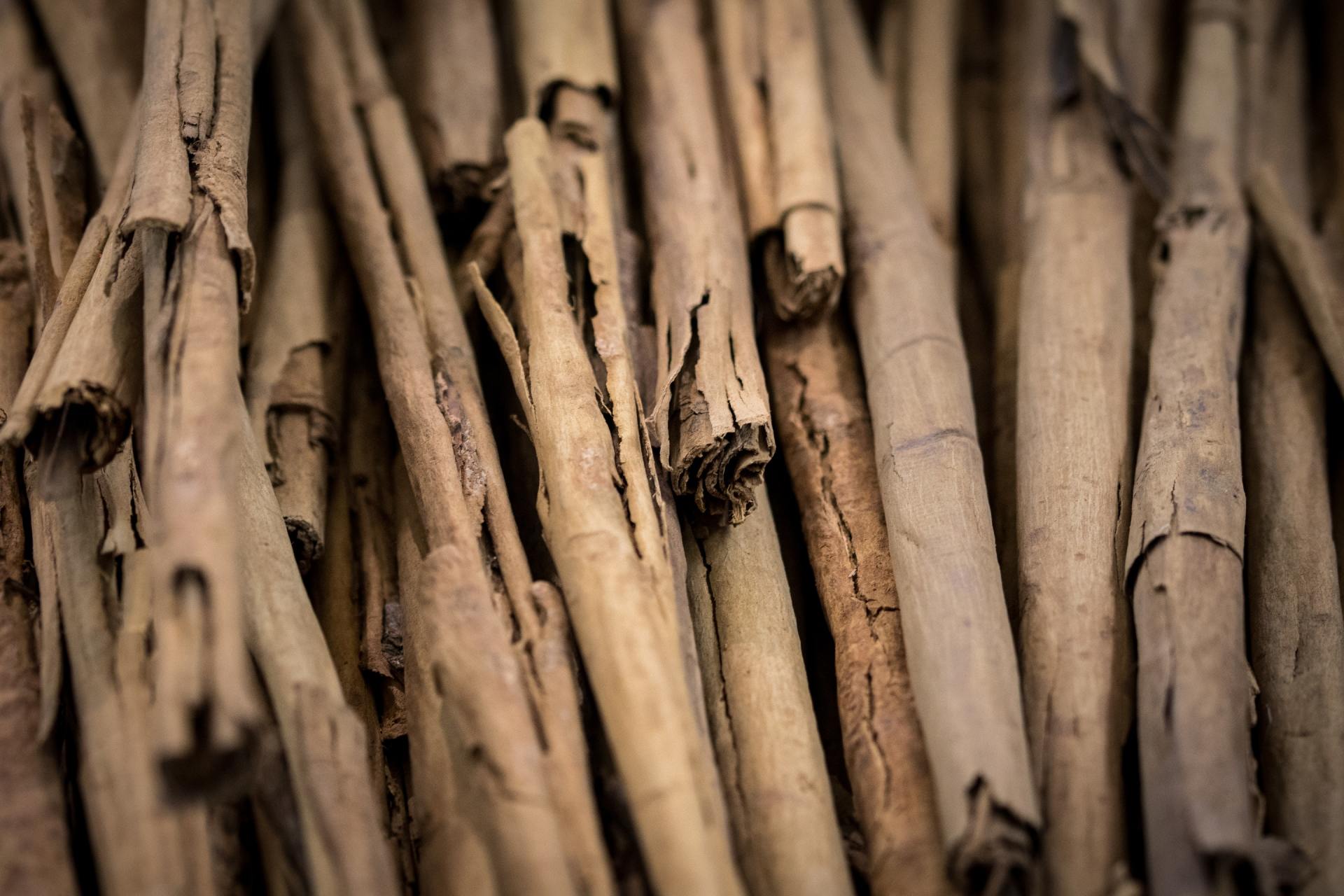Free delivery within Singapore for all orders above $85.
Parcels are shipped out every Thursday, please indicate "urgent" for priority. Thank you for your patience!
Cinnamon bark CO2 extract
10ml 27.50 sgd / 30ml 57 sgd
Botanical name: Cinnamomum cassia blume.
Origin: China
Extraction: Supercritical fluid extraction (CO2 extraction)
Plant part : Bark
Scent: Sweet, warm-spicy, dry, tenacious scent.
Aromatherapy: Reviving and uplifting, relieves fatigue, repels insects.
Bodycare: Heating, improves circulation, helps reduce cellulite, improve joints mobility, pain reliever.
Blends well with: Ylang Ylang, Sweet Orange, Mandarin, Benzoin, Frankincense and in oriental type mixtures.
Precaution: Do not use on face. Dilute at 0.1% before topical use.
Best before Aug 2021
Cinnamon bark CO2 vs EO
The process of steam distillation (essential oil) is unable to extract cinnamon’s unique active phyto-compounds, therefore Vizü decided to source for the highest quality CO2 extraction of cinnamon which is most often prized by herbalists and practitioners of traditional medicine for its extra potent benefits. cinnamon CO2 has a stronger aroma and denser texture, very similar to freshly grounded cinnamon powder.

Cinnamomum cassia blume
Cinnamon is an anti-inflammatory, anti-bacterial, anti-fungal spice that can help relieve bloating and heartburn, and also offers protection against strokes. Cinnamon CO2 has a deeper smell and a darker hue due to more active compounds being extracted compared to Cinnamon essential oil. Please always ensure dilution as the main compound of this oil is Cinnamaldehyde, a known skin irritant.
This superb aromatic, spicy oil has excellent antiseptic properties and can be used to cleanse and purify the air via a diffuser. It is helpful for mental fatigue and aids in reducing arthritic pain, body aches, colds and flu.
Currently in the British Herbal Pharmacopoeia as a specific for flatulent colic and dyspepsia with nausea.
Cinnamon is one of the world's oldest natural spices, and is commonly used in traditional oriental medicine. Since thousands of years back, this herb has been used to treat colds, flu, digestive and menstrual problems, rheumatism, kidney troubles etc.
This pungent bark has been used in Egypt since 2000 BC, and by Chinese herbalists since 2700 BC, making it one of the first known spice. It was burned as an incense, used medicinally and in the embalming process, and to flavour food and drinks. At one time, Cinnamon was even valued higher than gold! Cinnamon was considered one of the most important herbs used in the Greek and Roman pharmacopoeia. Its leaves were also mentioned as a spice in a first century Roman cookbook. Its name was derived from the Greek word kassia, which means “to strip off the bark.”
Traditional Ayurveda even suggested the use of Cinnamon for the management of sexual dysfunction.
Natural fix for infectious diarrhoea:
- Mix 1 drop Cinnamon bark CO2 and 6 drops Oregano EO into 10 ml of Camellia seed oil.
- Massage onto stomach - if condition is serious, please apply once every 2 hours; otherwise apply once every 6 hours.
Anti-bacteria (thieves) air purifier blend
- Combine equal parts of Cinnamon bark CO2 + Clove bud EO + Lemon EO + Oregano/Thyme/Eucalyptus/Rosemary EO
- Shake well and diffuse to purify the air.
The bark oil is a dermal toxin, should never be used on the face. It is also a dermal irritant and dermal sensitizer, mucous membrane irritant.
Recommended maximum dilution of 0.1% should be adopted within the aromatherapy industry - that’s equivalent to one drop in 30 - 40 ml.
VIZU ORGANICS
Serving humankind & protecting aromatic medicinal plants since 2016.
Imported ingredients from direct manufacturers/distillers/farmers.
Proudly formulated and crafted in Singapore.
Company registration no: 53392620C
Last updated March 2024
